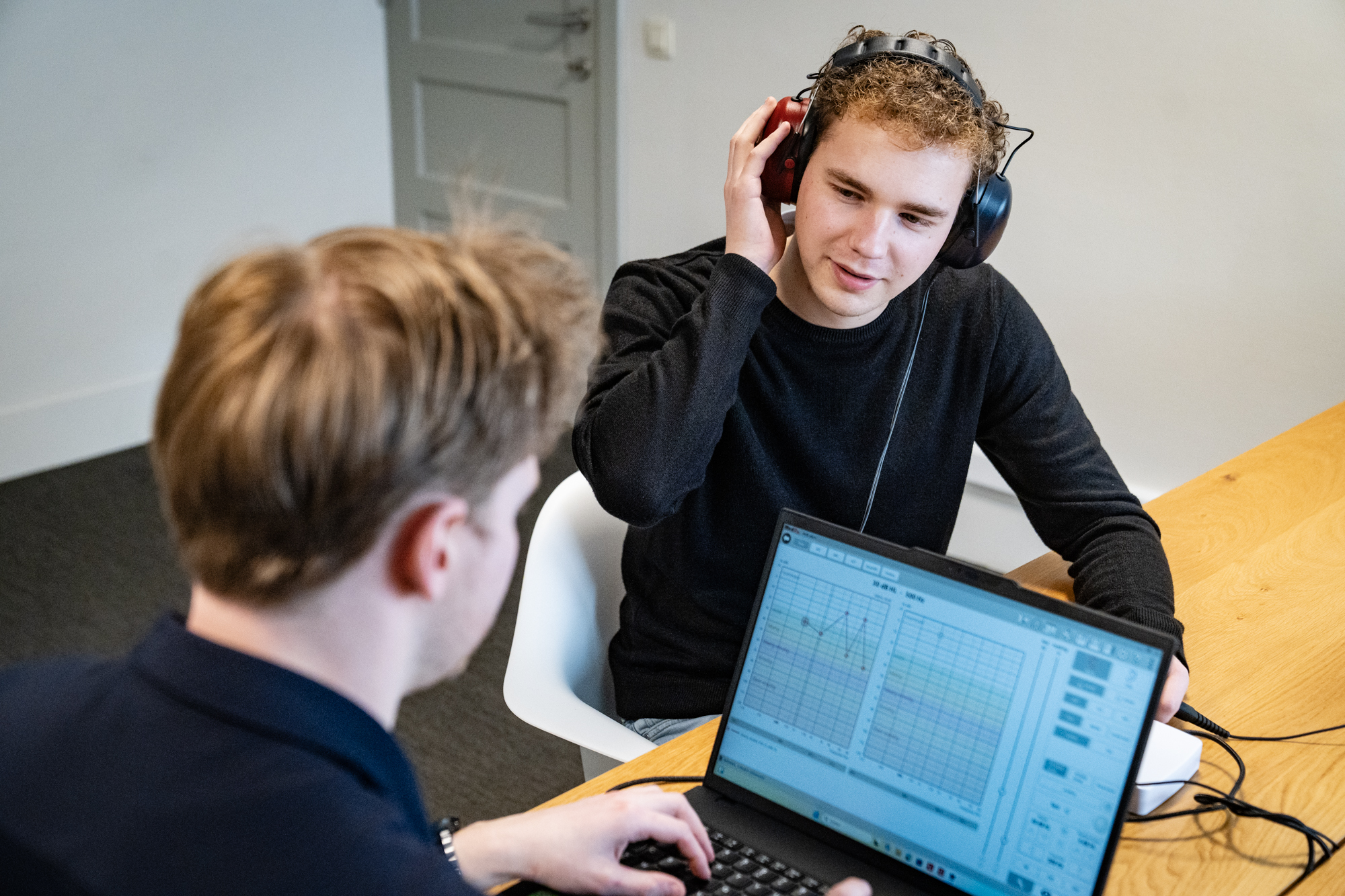Tinnitus research: TIDE project
Predictive coding and auditory illusions in tinnitus: This research investigates how the predictive coding system in the brain in people with tinnitus differs from that of healthy people. EEG measurements and cognitive tests are used to investigate how expectations and perceptions lead to auditory illusions. Such a biomarker would be a major breakthrough for diagnosis, treatment and investments in tinnitus research.

Description
Predictive coding and auditory illusions in tinnitus
Background
People with tinnitus experience a sound that doesn't exist in the outside world — a so-called auditory illusion. This suggests that their brain is “predicting” sound that isn't there. According to predictive coding theory, the brain continuously tries to interpret incoming stimuli based on previous experiences. When this prediction system becomes disrupted, it can lead to phantom perceptions such as tinnitus.
Aim of the research
In this study, we want to better understand how the predictive coding system in tinnitus patients differs from that of healthy people. We're investigating whether people with tinnitus:
- are more sensitive to auditory illusions;
- show a stronger abnormality in their neural responses to unexpected sounds;
- show a changed interplay between expectations and perception in the brain.
Study design
The study consists of an online preliminary study and two laboratory visits to BRAI3N.
During these visits, various neurophysiological measurements are performed using EEG (electroencephalography) to record brain activity.
Test 1: sensitivity to white noise auditory illusions (with spectral notch)
Test 2: Auditory “oddball” task to measure brain responses to unexpected sounds
Test 3: Pavlovian conditioning task to investigate the power of predictions
In addition, participants complete questionnaires about mood, anxiety, hallucination sensitivity and audiometry is performed to test hearing.
Overarching Framework — The TIDE Consortium
This research is part of the wider TIDE consortium, which aims to develop an objective method for diagnosing tinnitus.
Within this framework, various approaches are used to measure brain activity and analyse results using artificial intelligence. In this way, we aim to identify a biomarker that can indicate whether someone experiences tinnitus or not.
The development of such a biomarker would be both groundbreaking and disruptive. She would take patient care to a new level by finally making tinnitus objectively measurable. By deriving two test paradigms from the latest tinnitus models, elaborating them in detail and applying them broadly, we want to gain more insight into the underlying neurophysiology of tinnitus.
The ultimate goal is to find an objective marker — or at least a subtype-specific marker — that could pave the way for targeted treatments and larger investments from the pharmaceutical and hearing technology industries, which are still lacking today due to the lack of reliable diagnostic indicators.
Expected results
With this study, we want to gain insight into how the brain of tinnitus patients predicts and processes sound differently. A better understanding of these mechanisms helps to approach tinnitus not only as an auditory but also as a cognitive-neural phenomenon.
This research could form the basis for the development of an objective biomarker for tinnitus, which would be a breakthrough in both scientific research and clinical practice.
Status
This research is currently underway at BRAI3N Ghent and is part of the international TIDE consortium, in collaboration with leading research institutions in Europe.
Contact about this project
Do you have questions about this research project or would you like to receive more information? Feel free to contact our team.
Other research projects
Ready to take the first step?
Our specialists are here to help you. Find out what treatments are possible or schedule a consultation.
